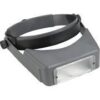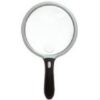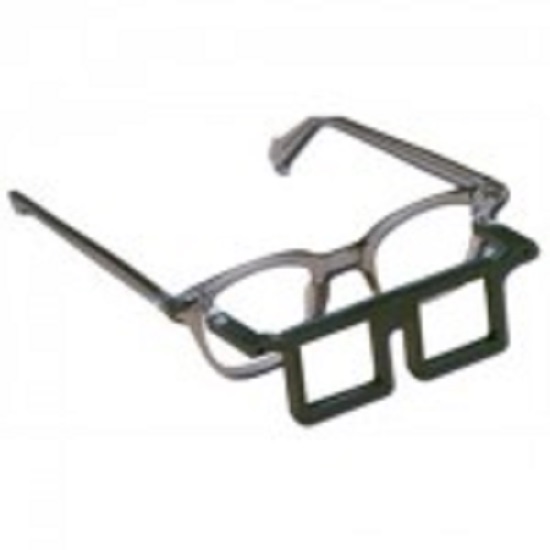

Magnifier Categories
Reading Magnifiers: Your Essential Guide to Buying, Using, and Maintaining.
Welcome to our buyers guide for reading magnifiers! Whether you are an avid reader, crafter, hobbyist, finding the right magnifier can greatly enhance your visual precision.
FLAT RATE POSTAGE $8.00 PER ENTIRE ORDER:
Order as many magnifiers as you would like.
Your postage will always be $8.00 per order.
You may mix or match.
Alaska, Hawaii and international orders excluded.
DISTRIBUTORS INQUERIES: CONTACT telesightmagnifiers2@verizon.net
Reading Magnifiers: Your Companion for Clear and Comfortable Reading
When it comes to enhancing your vision for reading, a good magnifying glass is essential. Whether you need a handheld magnifier for portability or a hands-free magnifying glass for comfort during extended use, the right choice can significantly improve your experience.
What is The Best Reading Magnifier for Me?-It Depends on your Needs.
Choosing Reading Magnifiers Handheld
Pros:
- Enhanced Visibility: Handheld reading magnifiers significantly improve visibility for reading fine print, examining small objects, or performing detailed tasks like sewing or crafting. They can magnify text and images, making them easier to see.
- Portability: These magnifiers for reading are typically lightweight and easy to carry, making them convenient for on-the-go use. You can easily slip one into a bag or pocket.
- Variety of Options: There are many types of handheld magnifyrs available, including those with built-in LED lights for better illumination..
- Durability: Many hand magnifiers are made with high quality, scratch-resistant lenses, ensuring they last longer and maintain clarity.
- Ease of Use: Hand held reading magnifiers magnifiers are generally straightforward to use, requiring no special setup or technology, making them accessible for people of all ages.
Cons:
- Limited Magnification: While hand held magnifying glass can provide significant magnification, they may not be powerful enough for individuals with severe visual impairments
- Fatigue with Extended Use: Holding a magnifying glass for long periods can lead to hand fatigue, especially if the device is heavier or larger than average.
- Field of View: The field of view can be limited, meaning you may need to move the magnifier around to see larger areas, which can be cumbersome.
- Optical Distortion: Depending on the quality of the lens, some non-aspheric magnifiers may introduce optical distortion, which can affect clarity and usability
Choosing a Reading Magnifier Hands Free
Pros:
- Reduced Eye Strain: Hands free reading magnifiers alleviate eyestrain and fatigue that often accompany prolonged tasks. By providing magnification without requiring you to hold the device, they enhance comfort during extended use.
- Stability and Convenience: Many hands free options, such as stand-mounted magnifiers, offer stability, allowing users to focus on their tasks without the need to hold the magnifier. This is particularly beneficial for activities like reading or crafting.
- Versatility: Hands free magnifiers come in various forms, catering to different needs. For instance, Telesight Magnifiers are great for viewing larger areas, while headband magnifiers are ideal for detailed work like jewelry making or electronics repair.
- Built-in Lighting: Many hands free magnifiers include built-in LED lights, which enhance visibility in low-light conditions. This feature is especially useful for reading or working on intricate projects.
- Accessibility: These magnifiers are designed to assist individuals with low vision, making them suitable for a wide range of users, including seniors and those with visual impairments.
Cons
- Weight and Bulkiness: Some hands free magnifiers, particularly those with stands or built-in lighting, can be heavier or bulkier than handheld options. This may limit portability and ease of use in certain situations.
- Limited Field of View: Depending on the design, some hands-free magnifiers may have a restricted field of view, requiring users to adjust their position or the magnifier itself to see larger areas.
- Cost Variability: The price of hands-free magnifiers can vary widely based on features and quality. Higher end models with advanced optics and lighting can be expensive, which may not fit every budget.
Types of Hands Free Reading Magnifiers.
A Hands-free reading magnifier comes in various designs, each suited for different tasks and preferences. Here is an overview of the main types,
Telesight Magnifiers:
- Telesight magnifiers are designed like glasses, allowing for hands-free use while providing a wide field of view. They are particularly effective for detailed tasks such as reading small print or working on intricate projects.
- Clip-On Magnifiers: Clip on magnifiers attach to regular glasses, making them a convenient option for those who already wear prescription eyewear. They are generally lightweight and portable, making them easy to carry and use.
- Headband Magnifiers: These magnifiers allow users to keep both hands free for detailed tasks, such as crafting or repairs. Many headband magnifiers come with interchangeable lenses, offering various levels of magnification for different tasks.
- Hands-Free Magnifier on Stand: Stand-mounted magnifiers provide a stable platform, allowing for hands-free use without the need to hold the device. They are perfect for tasks like reading or working on crafts where the user remains in one position.
- Hands Free Magnifying Glass with Light Built-in LED lights improve visibility, especially in low-light conditions, making them ideal for detailed work. These magnifiers can be used for various tasks, from reading to intricate hobbies, providing both magnification and illumination.
Conclusion
When selecting a good magnifying glass lens, consider the specific tasks you need it for, as well as your comfort and usability preferences. Each type has its unique advantages and disadvantages, so finding the right fit will enhance your experience and effectiveness in various activities.
What Magnification Power Should I Choose?
The magnification power you need depends on your vision and the task at hand. Generally, a magnification of 2x to 4x is sufficient for reading, while more detailed work may require higher magnification.
Why Do I Need a Magnifier with Light?
Illuminated magnifiers provide additional brightness, enhancing contrast and making it easier to see in low-light conditions.
How to Clean Your Magnifier.
To maintain optimal clarity, clean the lens with a soft, lint-free cloth and mild lens cleaner. Avoid abrasive materials that can scratch the surface.
Magnifying Glass Lens-Information
Magnifier-Helpful Blogs
- BLOG CHOOSING A STAND MAGNIFIER
- CHOOSING A DESK MAGNIFIER
- BLOG CHOOSING A HANDS FREE MAGNIFYING GLASS
- BLOG CHOOSING A BENCH MAGNIFIER
- BLOG CHOOSING A HAND HELD MAGNIFYING GLASS
Information On Industrial Magnifying Glass
Information On Inspection Magnifying Glass
Information On Table Magnifier
Information On Lighted Magnifying Glass
Information On Book Magnifiers
Information On Desk Magnifying Glass
Information on Magnifying Page
https://telesightmagnifiers.com/product/telesight-sewing-magnifying-glass/
https://telesightmagnifiers.com/product/telesight-sewing-magnifier-2/
https://telesightmagnifiers.com/product/4x-led–magnifying lamp-2/
























